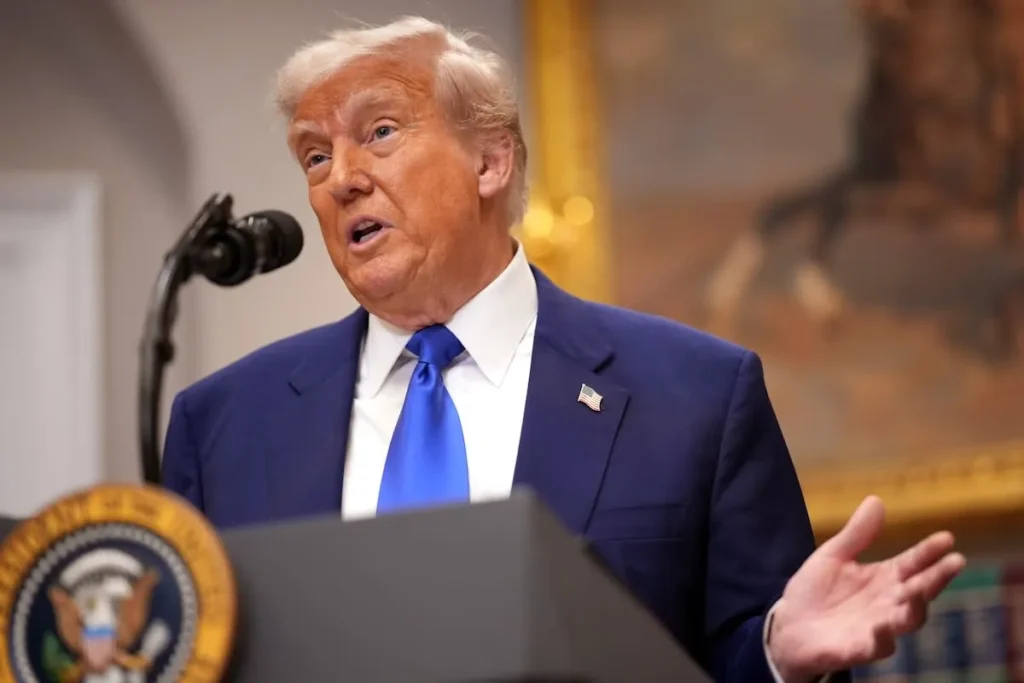
CMS Prepares Third Cycle of Drug Price Negotiations Under IRA as Trump Administration Revives Push to Lower U.S. Prescription Costs
In a move that signals the growing momentum of federal efforts to control prescription drug costs, the U.S. Centers for Medicare & Medicaid Services (CMS) announced on Monday that it is preparing for the third cycle of drug price negotiations under the Inflation Reduction Act (IRA). For the first time, this cycle will include drugs reimbursed under Medicare Part B, marking a significant expansion of the Biden-era policy into therapies administered in clinical settings. The newly negotiated prices are slated to take effect in 2028.
Simultaneously, former President Donald Trump, who returned to office following his re-election last year, signed an executive order reviving the controversial “Most Favored Nation” (MFN) policy. This order directs the federal government to set drug prices for Medicare based on the lowest prices paid by similarly advanced economies globally. According to the order’s language, the policy seeks to “bring prices for American patients in line with comparably developed nations,” and it lays out a 30-day timeline for Health and Human Services (HHS) Secretary Robert F. Kennedy Jr. and CMS Administrator Mehmet Oz to relay proposed pricing changes to pharmaceutical companies.
The two events—CMS’s draft guidance on Medicare Part B negotiations and Trump’s executive action—appear to underscore the administration’s sharpened focus on reducing prescription drug prices. This combined policy push is shaping up to be one of the most consequential in modern American healthcare regulation, affecting pharmaceutical companies, healthcare providers, and millions of Medicare beneficiaries.
Expansion to Medicare Part B Drugs: A New Era of Negotiation
The CMS announcement outlines key provisions of the third cycle of drug price negotiations under the IRA. While the first two cycles of negotiation focused exclusively on Medicare Part D, which covers self-administered prescription drugs such as pills and some injectables, the third round expands the scope to include Medicare Part B. This coverage applies to drugs typically administered in outpatient settings, including hospitals and doctor’s offices—especially injectable or infused therapies like cancer treatments, autoimmune biologics, and diagnostic agents.
Notably, Part B drugs tend to be among the most expensive in the Medicare program. These are often specialty medications used in the treatment of chronic or life-threatening conditions, including oncology, rheumatology, and ophthalmology. Given that these drugs are commonly delivered by healthcare professionals rather than dispensed at a pharmacy, they have historically been exempt from many cost-containment policies. The inclusion of these medicines in the negotiation framework marks a major policy shift.
Under the newly released CMS guidance, the agency will select 15 drugs for the third negotiation cycle by February 1, 2026. The final negotiated prices will go into effect in 2028, giving stakeholders nearly two years to prepare for the changes. The guidance also outlines criteria for how CMS will select eligible drugs for negotiation—focusing on high-spend products that do not have generic or biosimilar competition and that have been on the market for a certain number of years.
Additionally, the guidance includes provisions that would allow for previously negotiated drugs to be reconsidered if their exclusivity status changes—such as the loss of market exclusivity or the introduction of additional indications that significantly alter their clinical use or economic impact. However, CMS made it clear that changes in the cost of manufacturing or distribution will not be sufficient grounds for renegotiation, a stipulation likely to spark industry debate.
A Closer Look at the Second Cycle and the Industry’s Response
While CMS prepares for the third cycle, the second cycle of negotiations—launched in early 2025—is currently underway. This round targets several blockbuster therapies with high Medicare spending, including Novo Nordisk’s Wegovy and Ozempic (used for obesity and type 2 diabetes), GSK’s asthma treatment Trelegy Ellipta, and Bristol Myers Squibb’s Pomalyst for multiple myeloma.
CMS has until June 1, 2025, to present its initial pricing proposals to pharmaceutical manufacturers. Companies then have the opportunity to either accept the offer or file a counterproposal, initiating a structured negotiation process. The final negotiated prices from this cycle are scheduled to be implemented in 2027.

The pharmaceutical industry has responded with a mixture of caution and concern. While many firms have publicly expressed their willingness to engage in good-faith negotiations, several lawsuits challenging the IRA’s price negotiation provisions remain active in federal courts. Industry trade group PhRMA and several individual companies have argued that the policy constitutes a form of price control that undermines innovation and violates constitutional protections, including due process and the prohibition against government takings without compensation.
Trump’s MFN Revival: A Parallel Strategy With Global Implications
President Trump’s executive order to reinstate the “Most Favored Nation” policy adds another layer of complexity to the administration’s drug pricing strategy. Originally floated during Trump’s first term and met with intense industry resistance, the MFN policy aims to link Medicare reimbursement rates for prescription drugs to the lowest prices available in peer nations such as Germany, the United Kingdom, Canada, and Australia.
The MFN order represents a dramatic shift from the traditional U.S. approach to pharmaceutical pricing, which has long allowed manufacturers to set launch prices with minimal regulation. Critics argue that this system has led to some of the highest drug costs in the world. Proponents of the MFN policy, including Trump, contend that aligning U.S. prices with global standards will deliver long-overdue relief to American patients and taxpayers.
According to the new executive order, HHS Secretary Kennedy and CMS Administrator Oz must deliver implementation details to manufacturers within 30 days. This requirement sets an aggressive timeline and signals that the administration intends to move swiftly to operationalize the new pricing model.
Policy Volatility: Pill Penalty Reform and FDA Shakeups
The Trump administration’s drug pricing campaign is unfolding amid broader disruptions to federal health policy. In addition to the MFN revival, Trump recently signaled his intention to reform the so-called “pill penalty,” a clause in the IRA that allows biologics 13 years of market exclusivity before being subject to Medicare negotiation, while small-molecule drugs only get nine years. Critics say this creates a disincentive to develop traditional oral therapies, and Trump has indicated his administration may work to equalize the negotiation windows.
At the same time, major structural changes are happening within the Department of Health and Human Services. In February, Secretary Kennedy launched a sweeping reorganization of HHS that included roughly 3,500 layoffs at the Food and Drug Administration (FDA). The cuts, which Kennedy argues will streamline operations and eliminate bureaucratic inefficiencies, have raised alarms within the healthcare community. Some critics warn that reducing the FDA’s workforce—particularly among reviewers and scientists—could impair the agency’s ability to ensure timely and safe drug approvals.
Trade Tensions and the Pharma Supply Chain
Adding to the uncertainty, Trump has floated the possibility of imposing “major tariffs” on pharmaceutical imports, citing national security concerns. In April, the Commerce Department launched a national security investigation into the reliance of the U.S. pharmaceutical supply chain on foreign manufacturing, particularly from China and India. Depending on the outcome, the probe could result in trade restrictions that force companies to reshore production—a shift that may raise short-term costs even as it aims to increase long-term resilience.
With CMS preparing its third wave of drug negotiations and the Trump administration reinvigorating parallel cost-cutting policies, the landscape for drug pricing in the United States is undergoing a profound transformation. The next several months will be critical for stakeholders across the healthcare ecosystem—from drug manufacturers and payers to patients and providers.
The combined impact of IRA-based negotiations, MFN-linked pricing, and potential trade restrictions suggests a future in which pharmaceutical pricing is no longer dictated solely by market forces but shaped increasingly by government intervention. Whether this results in long-term affordability without stifling innovation remains one of the most consequential policy questions of the decade.





